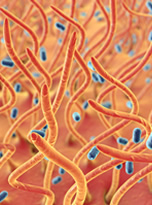Read and report vaccine reactions, harassment and failures.
Pertussis (Whooping Cough) Disease & Vaccine Information

Pertussis: The Disease
Pertussis, commonly referred to as whooping cough, is a highly contagious respiratory disease caused by the Bordetella (B.) pertussis bacterium. B. pertussis bacteria attach themselves to the mucus membranes of the respiratory tract and cause inflammation in the body. The major symptom of B. pertussis whooping cough disease is uncontrollable coughing.
Symptoms of B. pertussis at its onset are similar to the common cold, or an allergy attack with stuffy or runny nose, dry cough, loss of appetite, fatigue and, sometimes, a low fever. After one to two weeks, the disease usually progresses to bursts of spasmodic coughing (paroxysms) with large amounts of mucous, gagging and vomiting with or without a whoop that becomes worse at night. During the day, the child or adult may look and feel fine with the exception of frequent coughing spasms. A final recovery stage with only occasional coughing fits may last for weeks or even months. Learn more about Pertussis…
Pertussis Vaccine
In the U.S. today, pertussis vaccine is administered only in a combination shot (DTaP, Tdap) that contains vaccines for diphtheria (D), tetanus (T), and pertussis (whooping cough) (P). The CDC’s Advisory Committee on Immunization Practices (ACIP) currently recommends administration of a pertussis containing vaccine (DTaP) at two, four, and six months old; between 15 and 18 months old; and between four and six years old. Another booster dose is recommended at 12-13 years of age (Tdap). While the ACIP also recommends that pregnant women receive a dose of Tdap vaccine during each pregnancy, between 27 and 36 weeks gestation, regardless of a previous history of Tdap vaccine, this recommendation contradicts the information provided by the vaccine manufacturers. The product insert of both Boostrix and Adacel, the two available Tdap vaccines in the U.S., state that the safety and effectiveness of vaccination has “not been established in pregnant women”.
The whole cell pertussis vaccine was created in 1912 and licensed in 1914. In the 1940’s, the pertussis vaccine was combined with diphtheria and tetanus to become the DPT vaccine and licensed for routine use. This vaccine was replaced with a purified, less reactive acellular DTaP vaccine in 1996. (DPT was available in some doctor’s offices in the U.S. until about 1999). DPT is still given to infants and children in many developing countries because it costs only pennies to manufacture a dose. Learn more about Pertussis vaccine…
Pertussis Quick Facts
Pertussis
- Pertussis, commonly referred to as whooping cough, is a respiratory disease caused by the Bordetella (B.) pertussis bacterium. B. pertussis bacteria attach themselves to the mucus membranes of the respiratory tract and cause inflammation in the body. Only a lab test will positively confirm the exact organism causing the whooping cough symptoms.
- Pertussis whooping cough is highly contagious. Whooping cough disease circulates all year long, however, in North America, more cases are diagnosed in the summer and fall.
- In 1922, there were 107,473 pertussis cases reported in the U.S. with 5,099 deaths. In the United States, deaths from pertussis infections dropped by more than 75% between 1922 and 1948, the year beforethe DPT vaccine was licensed. Mortality associated with pertussis declined dramatically in the 1940’s as living conditions improved. Continue reading quick facts…
Pertussis Vaccine
- There are currently 9 different pertussis vaccines licensed in United States. DTaP/Tdap vaccines packaged in single dose vials contain reduced bioactive pertussis toxin, less endotoxin than the DTP vaccine, and may contain trace amounts of mercury, along with an aluminum adjuvant. Depending upon the vaccine manufacturer, vaccines containing pertussis may contain varying amounts of inactivated pertussis toxin, filamentous hemagglutinin (FDA), pertactin, fimbriae, formaldehyde, polysorbate 80 (Tween 80), gluteraldehyde, 2-phenoxoyethanol, aluminum and thimerosal (mercury).
- IMPORTANT: Parents should monitor their children carefully day and night for at least 72 hours after vaccination. Pertussis vaccine has been documented to cause high fever; severe local reactions at the site of the injection; high pitched screaming and uncontrollable crying; collapse/shock (hypotonic/hyporesponsive episode); lethargy (excessive sleepiness); convulsions with or without fever; and brain inflammation (encephalopathy).
- As of April 1, 2024, there had been 6,170 claims filed in the federal Vaccine Injury Compensation Program (VICP) for injuries and deaths following pertussis-containing vaccination, including 871 deaths and 5,299 serious injuries.Continue reading quick facts…
NVIC encourages you to become fully informed about Pertussis and the Pertussis vaccine by reading all sections in the Table of Contents below, which contain many links and resources such as the manufacturer product information inserts, and to speak with one or more trusted health care professionals before making a vaccination decision for yourself or your child. This information is for educational purposes only and is not intended as medical advice.



